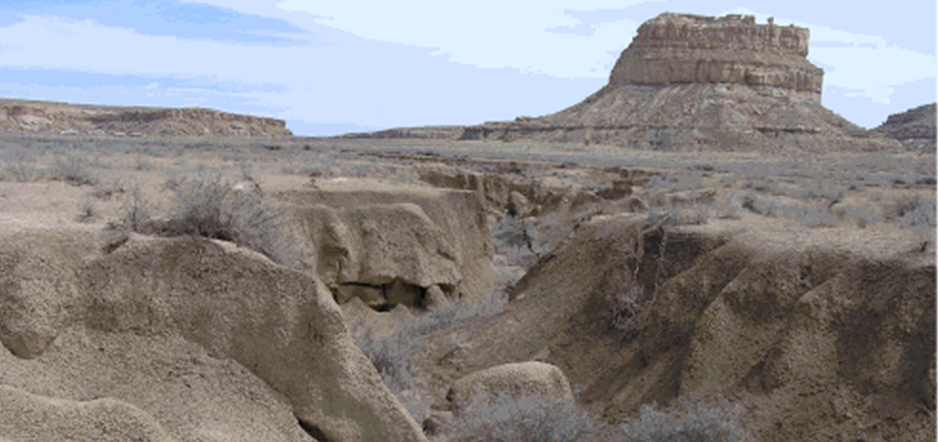Restoring Desert Grasslands or Creating Desert Badlands?

For 60 years, this National Park Service land has been “protected” from cattle, unintentionally accelerating its desertification.
Here is a typical Big Wildlife program being pursued at Big Bend National Park to “protect” degrading habitat.
(ABOVE PDF can be viewed here -> )
I don’t doubt the sincerity or diligence of the park employees who wrote this report, which accurately embodies the Big Wildlife paradigm. It reflects what universities like Texas A&M teach in their wildlife programs, what agencies like the Texas Parks and Wildlife Department practice, and what the majority of conservation organizations – from The Nature Conservancy to the Texas Wildlife Association – promote to their members and do for themselves.
The fact that hundreds of volunteers are willing to support restoration attempts demonstrates that many of us recognize that a disaster is unfolding and are willing to do something about it.
The actions described have twin problems: cost and sustainability. When it comes to cost, manpower must be considered. Roughly 10-1/2 volunteer hours per acre are required for a typical restoration effort. The next consideration is the actual expense. I estimate the total cost per acre approaches $500 when all expenses are included.
The second problem is sustainability. If the process of recovery is initiated, land management practices have to change to sustain the recovery or the land’s condition will revert. After all, NPS has had 70 years to prove that animal removals restore habitat.
As NPS says, the objective is to “…slow, and perhaps arrest,” the desertification of the Big Bend National Park. This is an implicit admission that NPS doesn’t t know what to do about rangeland decline. How could they? They misunderstand its causes.
Managing for failure is unacceptable
If NPS’s best hope is to “slow” desertification, this tells us that it is resigned to failure. Indeed, many agencies seem to be managing extinctions when restoration is what is needed.
The report doesn’t mention animals at all except for a negative reference to cattle and the need to “protect” land, which is code for removing so-called invasive species. It completely ignores animals as indispensable “tools” for improving habitat health and initiating rangeland restoration.
Restoration can be achieved, using practices that can be implemented at many times the speed and at a tiny fraction of the cost. Here are actions that have been proven just up the road at Circle Ranch. All of these practices will work at Big Bend National Park, and anywhere else in the desert Southwest.
Cows and Keyline: Restoring Desert Grasslands from Christopher Gill on Vimeo.
Cows and Keyline: Restoring Desert Grasslands: This 17-minute video shows how we have taken a horrible gully, and returned its water to grasslands. We discuss the water management techniques that make this possible, why the use of range poisons is a costly, counterproductive mistake, and why we must employ animals, including exotics like cows, for the animal impact without which ranges cannot recover.
Desert Grassland Restoration Without Poisons from Christopher Gill on Vimeo.
Desert Grasslands Restorations Without Poisons: This 11-minute video demonstrates how to restore desert grasslands without poison like Spike. Three techniques are employed:
1. Wild and domestic animals to deliver animal impact.
2. Subsoil plowing using Keyline water management and the Yeomans Plow, to improve water function.
3. Water harvesting from eroded roads and gullies.
These practices when used together are the safest, cheapest, and fastest way to restore desert grasslands. They do no harm to animals, plants, or people.
Restoring Desert Grasslands: Thistle and Keyline from Christopher Gill on Vimeo.
Restoring Desert Grasslands: Thistle and Keyline: 1-1/2 minutes. In far-West Texas, Keyline subsoiling of desertified dead zones stimulates the growth of thistle, a much-maligned “exotic” which is a superb desert rescue plant.
Cattle Impact for Dead Spots from Christopher Gill on Vimeo.
Cattle Impact for Dead Spots: This two-minute video shows how cattle can be used to treat dead spots on rangeland.
Time: The Grazier’s Best Friend or Worst Enemy from Christopher Gill on Vimeo.
Time: The Grazier’s Best Friend or Worst Enemy: This two-minute video discusses how cattle can restore desert grasslands, and why time is the most important variable in the equation.
Imagine if at Big Bend National Park, the same money and civic spirit were redirected towards practices that are quick, cheap, and physiologically sound.
For many articles on these topics, click the tags below and alongside this piece.
